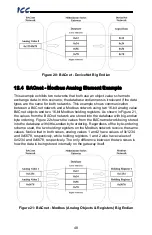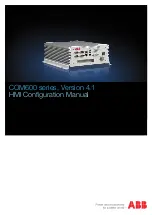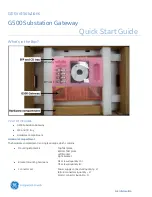
33
ICC
8.3.2
Database Logic
8.3.2.1
Overview
A variety of database logic operations are included which provide PLC-style
manipulation of database values. Categories such as logical, arithmetic and
filtering operations allow for autonomous control over value modification and data
movement within the database. High-level signal conditioning is also realizable
via the construction of compound formulas derived from the elemental building
block operations provided. To add database logic operations to a device, select
the device in the
Project
panel, then add
Internal Logic…Database Logic
.
Database logic operations are executed in sequential order, according to the
ordinal position in which the operations are listed in the
Project
panel under the
Database Logic
heading.
Some notes of interest for the database logic operations are as follows:
All Database Logic Operations
•
All inputs to an operation may either be a value located in the internal
database or a constant value.
•
A floating-point “Multiplier” field is available on each database-sourced input
and on the output which allows the inputs to be scaled prior to operation
execution, and the result to be scaled after operation execution. The input is
multiplied by the input multiplier, and the result is divided by the output
multiplier.
•
All operations can be dynamically enabled/disabled using an optional
“Enable Trigger” element (refer to section 8.3.2.3 for more information on
Enable Trigger behavior.)
•
The outputs of all operations must be stored in the internal database.
•
The number of bytes taken from the database (for non-constant inputs) is
determined by the corresponding “Data Type” selection, starting at the
designated “Database Address”.
•
The number of bytes written to the database (for outputs) is determined by
the corresponding “Data Type” selection, starting at the designated
“Database Address”.
Logical Operations
•
Not
,
And
,
Or
, and
Exclusive Or
operations can be performed on either a
bitwise or logical basis, depending on the selection of the “Operation Type”.
When a logical operation type is chosen, non-zero input values are
considered to be “true” and zero input values are considered to be “false”.
The output value of the logical operation will then be written to the database
as “1” for true and “0” for false.
•
The
Copy
operation outputs the input value.
•
The
Bit Copy
operation outputs the value of a single bit from the input
database location to a single bit in the output database location. No other
bits in the output database location are modified by this operation.
















































